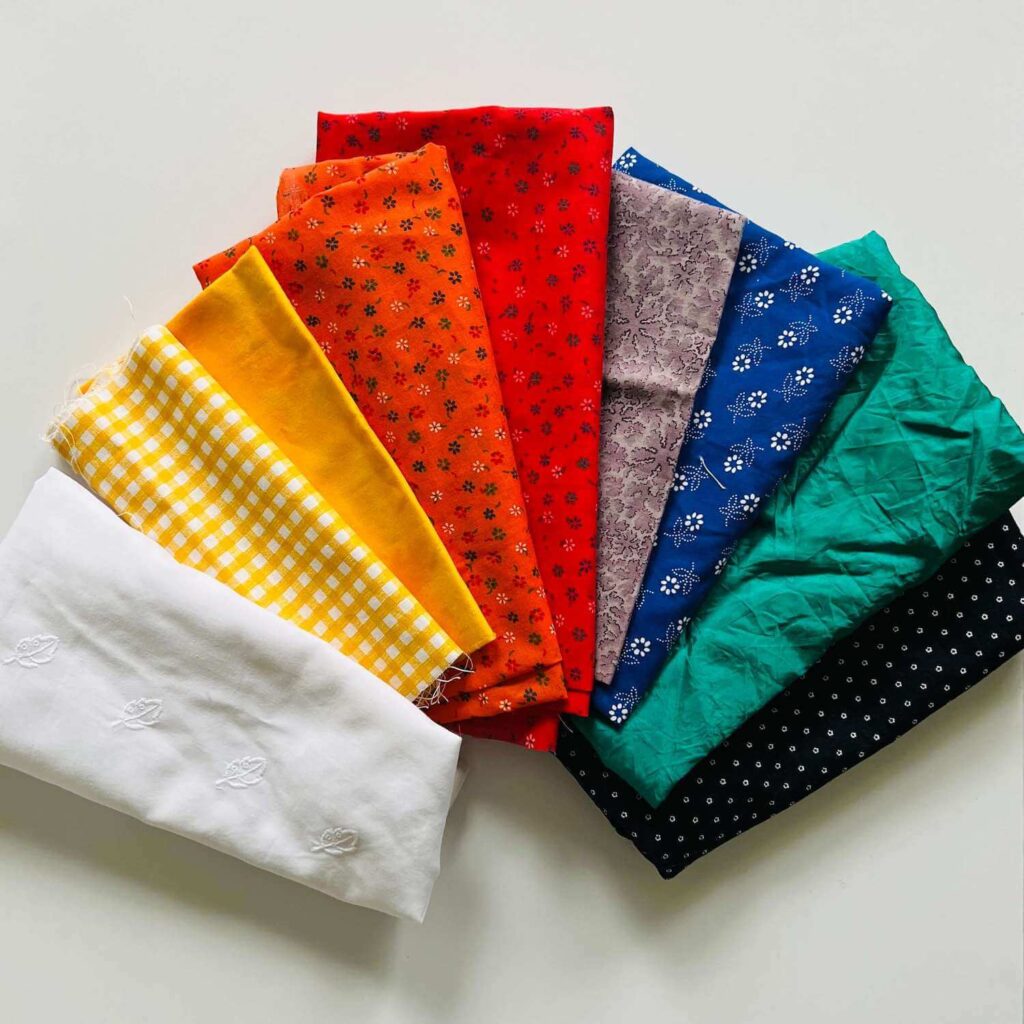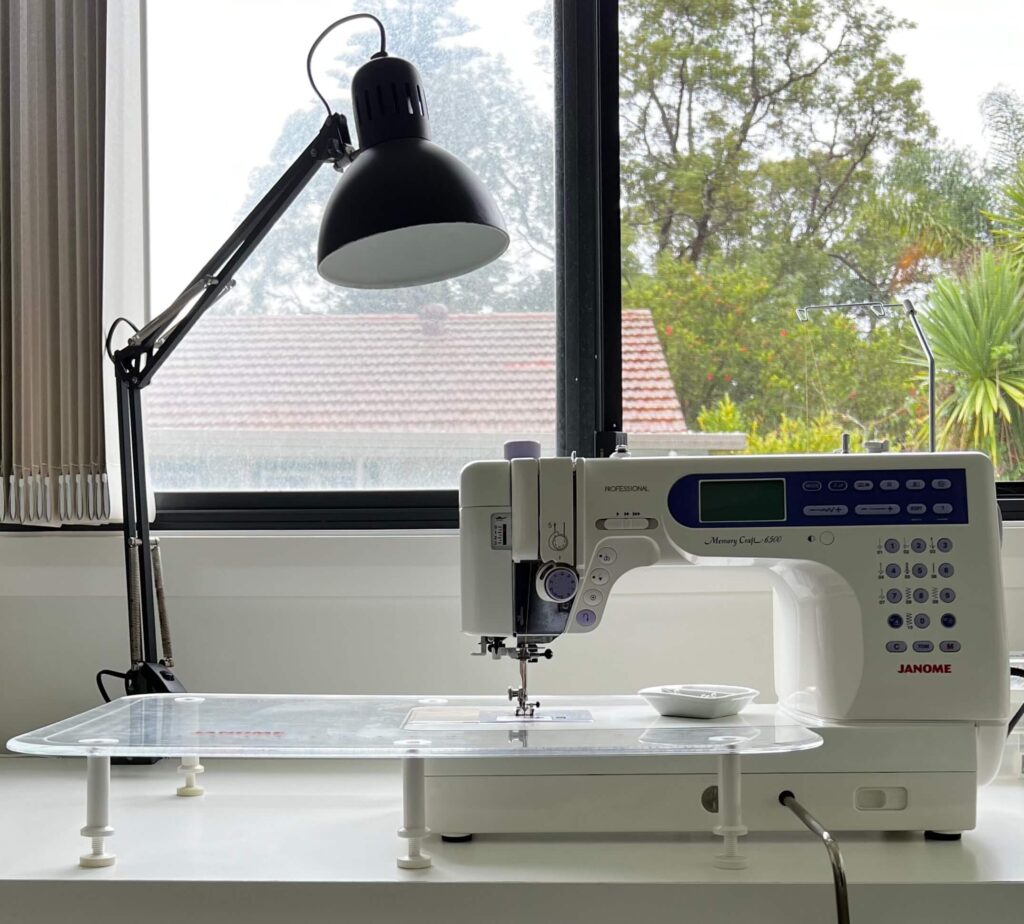Every sewing course should begin with safety rules where it’s explained how to work with tools and machines in the safest way. Turning the machine off when you’re changing the needle, adjusting the speed of sewing, using a finger guard or clapper are some of the safety practices we can prevent injuries with.
Sewing safety rules:
These are not just rules, but rather safety habits. The practices for us to eliminate hazards and have positive memories on time we spent in sewing room.
Machine OFF
Always turn off the machine when you’re:
- threading your machine
- changing a presser foot
- changing a needle
- cleaning the machine
Foot pedal
Put your foot next to the foot pedal before you do anything with your fingers close to the needle. Move your foot on a side of the pedal anytime you’re going to change needle, position, presser foot, settings etc.
Some computerised sewing machines has a START/STOP button. With these, you don’t have to use a foot pedal. This feature is handy if you have small children running around, pets or if you would like to teach kids – they often can’t reach the floor.
Pins and hand sewing needles
- Never sew over pins, you will bend or break the machine needle.
- Always stop and pull out the pin, place it in pin cushion/ holder and then continue to sew.
- When a pin/ pincushion/ needle drops on the ground, stop and pick it up. Hold a pincushion from the sides, never from bottom.
- If you can’t find the pin/ needle that fell down, hold a magnet close to the floor and it move over the surface until you find it.
- Don’t put pins in the mouth, you can inhale them. Use wrist pin cushion or magnetic holder instead.
- Thimble is a great little gadget, wear it when hand sewing to prevent the needle from sliding under the fingernail.
When fitting, safety pins are more safe and comfortable choice than pins.
When sewing with younger kids, try wonder clips instead of pins.
Scissors
Standard safety rules we know from the school apply everywhere, every time.
- When you carrying scissors, hold them by closed blades and walk.
- Pass scissors by holding closed blades, handle first.
- Watch carefully at what you’re cutting. Make sure that your fingers are not in the way.
- Cut in the direction away from you.
- Whatever you’re cutting, let it rest on the table, do not hold it in the air.
- When you finish with scissors, close them up. Put scissors in the middle of the table, not on the edge.
Rotary cutter
- When cutting with quilting ruler, use whole palm for holding it in place. You can also freehand when cutting. Either way, make sure that your fingers are not in the way.
- Lock the blade when you finish using it. Put rotary cutter in the middle of the table, not on the edge.
- Change your blades regularly. If your blade is dull, you are more likely to hurt yourself.
The rotary cutters can be dangerous but they cut fast and without moving a fabric, so it’s more accurate. On the market are cut resistant gloves or finger cots, you may consider purchasing for your own safety.
I don’t recommend using a rotary cutter when working with kids.
Speed control
You can control a speed of sewing in two ways: with a variable speed control or with a food pedal. In sewing we’re looking for accuracy, choose slow, medium or fast, depending on your project and experience level.
Use hand wheel or slow speed when you sewing over multiple layers and seams.
Machine needles
Broken needles happen to all sewist. I heard many horror stories about broken flying needle points across the room or into a face. Safety glasses or eyeglasses will protect your eyes.
Sometimes we can prevent needle to break:
- Don’t push or pull fabric, feed dogs will move fabric through the machine. Your hands just need to guide the fabric gently.
- Use hand wheel or slow speed when you sew over a thick, bulky areas.
- Do not sew over the pins.
- Change the needle if it’s bent or dull.
- Use a right type and size of the needle according to your project.
Hands and fingers
- Place your hands on each side of the presser foot, not in front.
- If the fabric needs help with feeding under the presser foot, use a tool for it – awl or tweezers works best for me.
When working with children, I would recommend to mark hand’s zones with a masking tape.
Did you know that you can buy a finger guard? It attaches onto presser foot holder and guards needle so fingers can get close.
Seam ripper
- Hold the seam ripper by the handle and seam rip in the direction away from you.
- When you have finished, put cover on it.
- Do not try to catch falling seam ripper, it hurts. Ask me how I know!
Iron and steam
- Iron can get very hot very quickly. Always check the setting before ironing/pressing.
- When ironing/pressing, the other hand is away (next to the body, behind the back).
- When you need to hold the fabric after pressing/steaming use a clapper (scrap piece of any wood works too).
- After use, turn the iron off and put it into base unit.
You can buy silicone heat resistant finger stalls, great if you need to work close to the hot iron or hot glue.
If you work with children, try finger pressing or pressing roller if possible.
Attire
For working in the studio I recommend general working attire such as close-in shoes, in case you drop scissors or other object on your feet and older clothes or apron if working with paint.
Long hair must be tied back or covered.
Mood
If you are tired, stressed out of distracted, you’re most likely to hurt yourself or others. Keeping calm and focused during a work is essential to safe workflow. Or let’s just leave the sewing to another day, it won’t go anywhere.
Read about benefits of sewing, wellbeing and self care are some of them.
Remember, safety first!
If you have other sewing safety rule worth knowing, please share it in the comments below.




Hi Ivana
Very interesting article in my case I have hurt myself in many occasions with pins and ironing. I must recognize most of the accidents I have had it is because I get distracted. Sometimes, I realise I have pins on my shirts after hours wearing them.
When it comes to ironing, most of my accidents happen when am working on little corners or small pieces I want to finish perfectly. I try to avoid accidents by using tweezers.
In my experience with children I get very nervous teaching them since I recognize they tend to get anxious about using the sewing machine and sometimes it is hard for them to follow all the previous steps or to listen the instructions before sewing.
Thanks for your content
Hi Astrid,
Tweezers are a great tool for those small corners, well done you!
I totally agree that teaching kids it’s challenge on itself, I would break down the sewing sessions in 15 minutes and change activities often.
Patience is a skill that needs to be learn.
Good Luck!